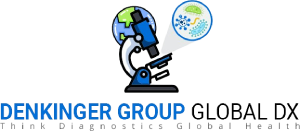Access to diagnostics is poor and inequitable around the world and scarce especially in resource-limited settings. This is the case despite the fact that diagnostics are central and fundamental to quality health care for the individual as well as public health. Without diagnostics, the patient might not get treated, might get inappropriately treated or overtreated and continue to infect others. The work of our group centers around improving diagnostic solutions for resource-limited settings and enable access.
Specifically, we aim to go full circle (see graphic) in our interventions research from identifying need to getting solutions to scale:
- Define Need and Feasibility: Diagnostics need to serve the people, thus an integral component of our work is defining the need for and feasibility of novel diagnostic solutions and identifying those, most likely to benefit (i.e. types)
- Predict potential: in our modelling work, we aim to define the potential of novel interventions to inform the focus on the most impactful interventions
- We work towards meeting the needs of end-users through discovery and development that incorporates human factor design
- Clinical and implementation studies assess performance and clinical utility to ensure potential translates into impact
- Economic evaluations and financing of Global Health relevant diagnostic tests inform policy and implementation to enable scale



